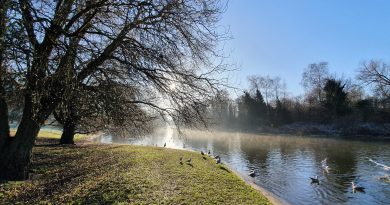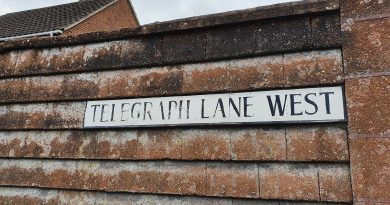Norwich – City Wall and Tower at Bull Close and Silver Road
Although Norwich doesn’t have anywhere near as much defensive wall left compared to cities such as York and Chester, there are still surviving stretches. There are also very few sections of wall in Norwich which can be walked on today, with this stretch having none of the original walkway left.
The stretches of wall that do survive have often only done so because later properties were built onto them. As an aside, I quite like the thought of the school playground backing onto the city wall, I wonder if the children had an understanding of how important the structure once was. If they did, I suspect they’d be rather disappointed that they couldn’t walk along it whilst pretending to be medieval soldiers defending Norwich from barbarians.
In the above map from the 1880s, there was once a school, memorial hall and some residential properties along here, on what is now a car park. The wall that they back onto is much repaired and likely formed part of the rear of the later structures. The area here is a little barren now, but it would have been bustling and it was located opposite the Pockthorpe Brewery which would have added extra atmosphere and brewing smells. At least though the area around this tower has been smartened up over the last fifty years, this photo from George Plunkett is from 1970.
The tower dates to the 1320s and the interior likely collapsed some centuries ago. It’s not entirely clear whether the building was repurposed for anything in the seventeenth and eighteenth centuries, but I’d suspect that some enterprising soul did something with it. Perhaps in some cases the tower would have been reused for building material, but there’s no fine stonework here for local builders over the centuries to pinch in the way that many religious structures had following the Dissolution of the Monasteries, it’s just a lot of flints and rubble.
What’s left inside of the tower, which had two storeys, with the lower floor being vaulted. There’s a growing amount of foliage on the structure as well which will probably need attention in the years to come.
The course of the wall is marked out where it leads from the tower towards the River Wensum. It would have also met the Pockthorpe Gate (or Barregates) at this point. As an aside, the land is higher today than when the walls and tower were built, which gives a distorted view now of how tall they were.
Pockthorpe Gate was taken down at the end of the eighteenth century, a period when much of the wall was lost.
So, it’s unfortunate that much of the city wall has been lost, but at least stretches do survive thanks to their being repurposed and partly incorporated into newer buildings. It means that the wall is much repaired in places, including some patches which look distinctly Victorian, but that does just all add to the history of this structure and its part in Norwich’s story.











